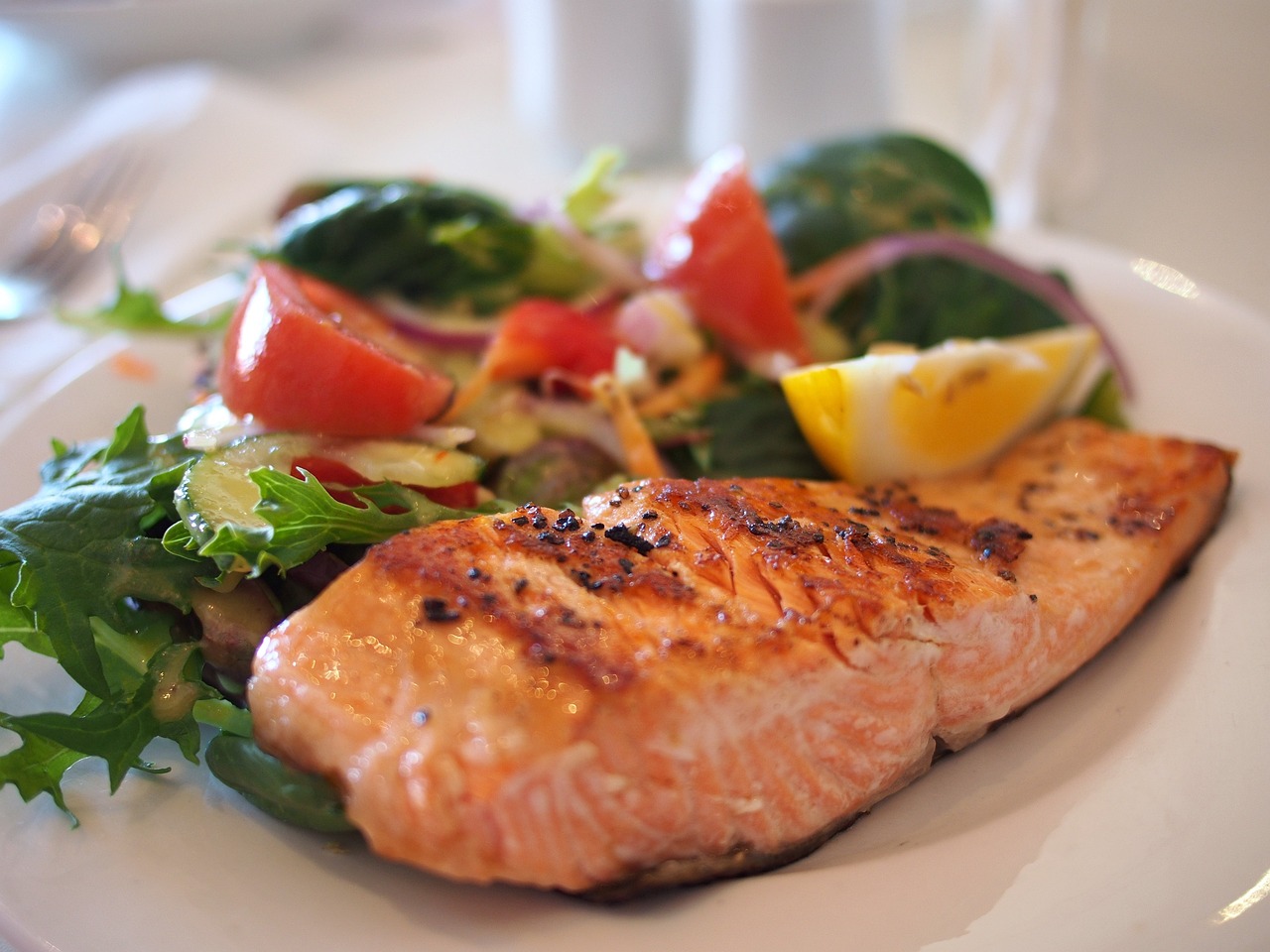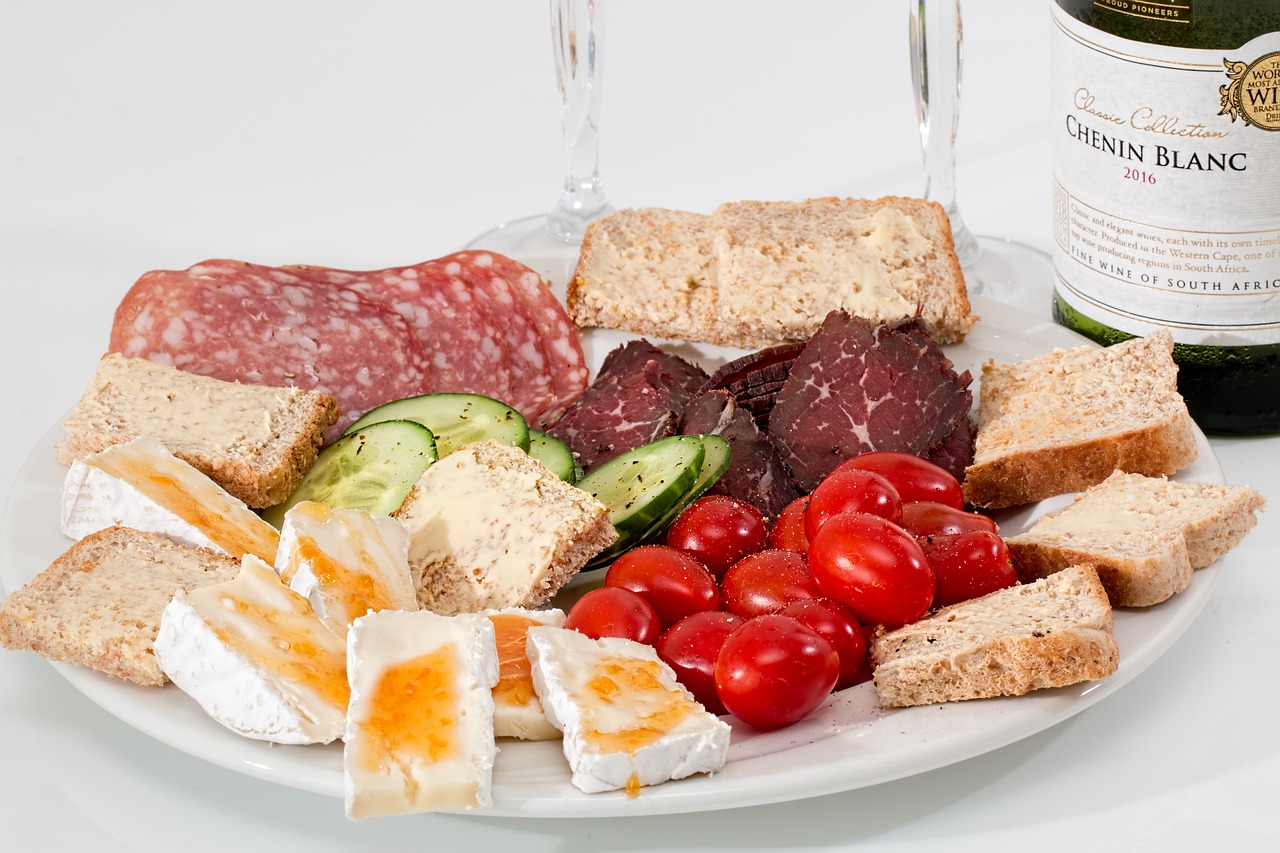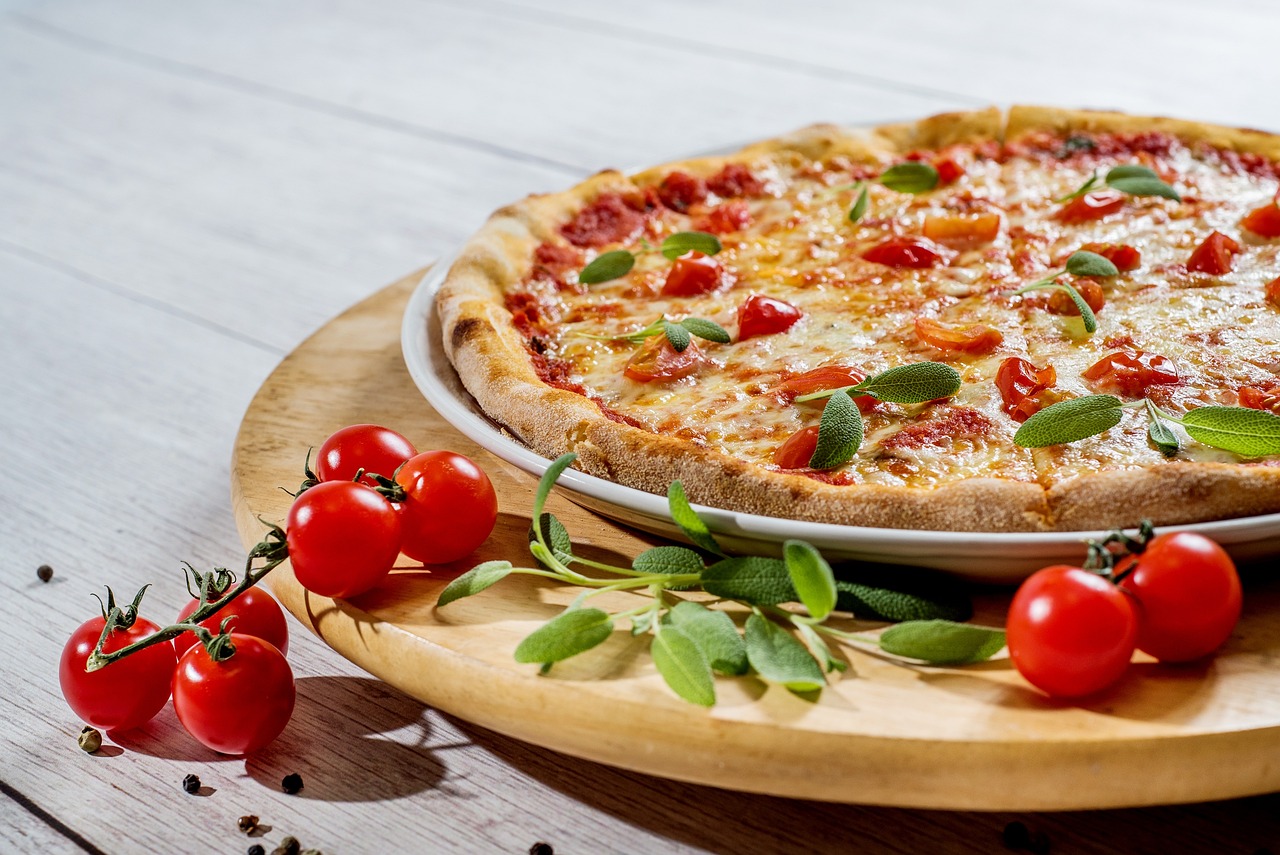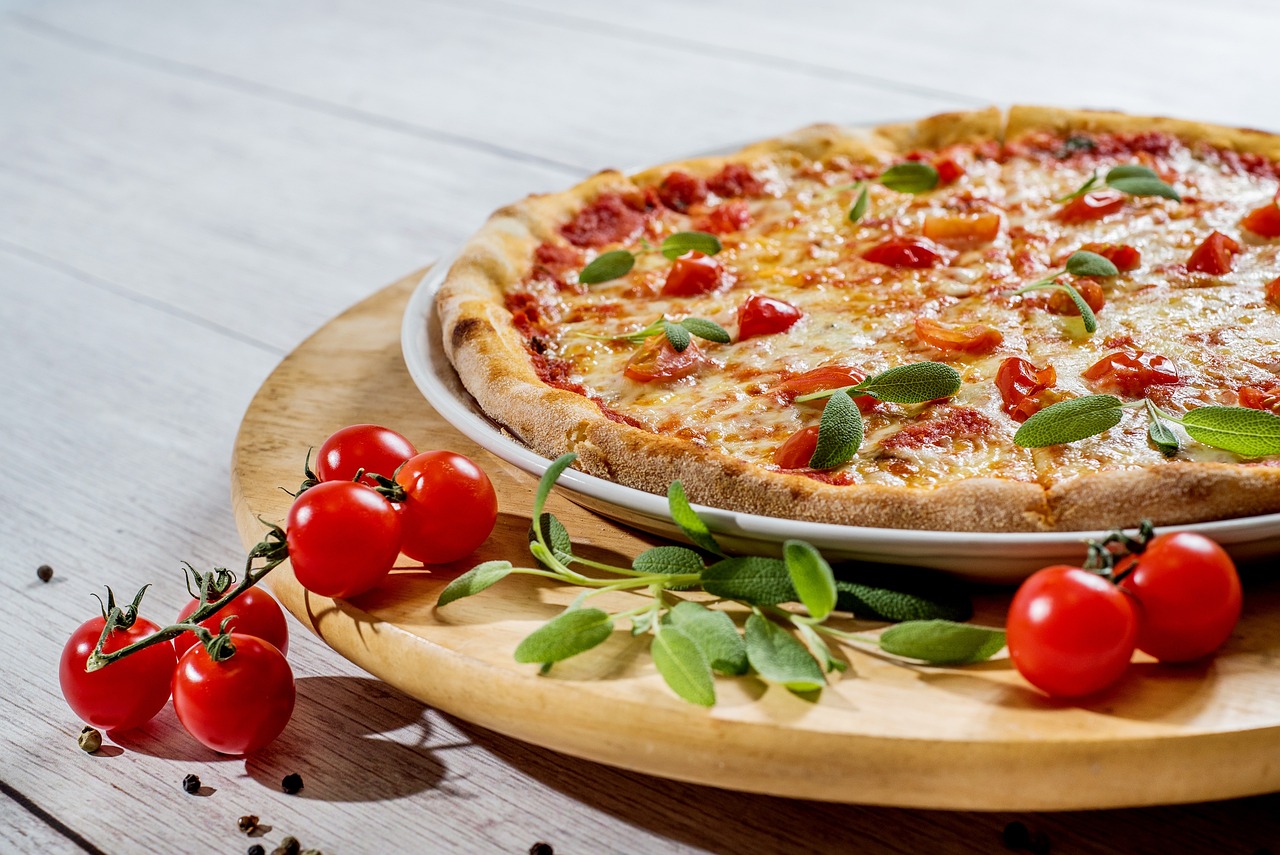Prepare your taste buds for a delectable journey through the culinary traditions of Eastern Europe. From the mouthwatering pierogi to the vibrant borscht, the flavors of this region are sure to tantalize your senses. Tastepan.com invites you to explore the rich history and heritage of Eastern European cuisine, taking you on a virtual tour of diverse dishes and regional specialties. Get ready to discover the secret recipes and stories behind these beloved dishes, as we delve into the captivating world of food culture and traditions.

Eastern European Cuisine
Eastern European cuisine is a delight for food enthusiasts who relish a combination of hearty flavors, unique ingredients, and centuries-old traditions. This culinary heritage has been shaped by the region’s geography, climate, and diverse cultural influences. In this article, we will explore the fascinating world of Eastern European cuisine, including iconic dishes such as pierogi, borscht, cabbage rolls, pork schnitzel, goulash, smoked fish, sour cream, kielbasa, and a variety of delicious desserts and sweets.
Overview of Eastern European Food
Eastern European food is known for its rustic and comforting nature, often featuring dishes that have been passed down through generations. The cuisine of this region consists of a harmonious blend of influences from neighboring countries, resulting in a rich tapestry of flavors. The diverse geography and climate of Eastern Europe have played a significant role in shaping the culinary traditions of each country, with hearty stews, preserved vegetables, smoked meats, and aromatic spices being common features.
Influence of Geography and Climate on Cuisine
The geographical diversity of Eastern Europe, which encompasses plains, mountains, forests, and coastlines, has influenced the region’s cuisine in various ways. In landlocked countries like Hungary and Poland, hearty dishes using ingredients such as pork, beef, and root vegetables are prevalent. In coastal regions like Croatia and Ukraine, fish and seafood take center stage. The colder climate of Northern Europe has also encouraged methods of food preservation, such as smoking, pickling, and fermentation. These preservation techniques have allowed Eastern Europeans to enjoy a rich variety of flavors throughout the year.
Common Ingredients and Flavors
Eastern European cuisine showcases a range of staple ingredients and flavors that are at the heart of many dishes. Potatoes, cabbage, beets, onions, and mushrooms are commonly used vegetables, while meats such as pork, beef, and lamb are staples. Eastern Europeans also have a fondness for aromatic spices like paprika, dill, caraway seeds, and garlic, which add depth and flavor to their dishes. Additionally, dairy products, such as sour cream and cheese, play a prominent role in this cuisine, lending richness and tanginess to many traditional recipes.
Pierogi
Origin and History of Pierogi
Pierogi, often referred to as the “dumplings of Eastern Europe,” have a long and storied history in the region. Originating in Poland, these beloved dumplings made their way across Eastern Europe, becoming a beloved staple in countries like Ukraine, Russia, and Belarus. The exact origins of pierogi are difficult to trace, as similar types of dumplings have been found in many ancient cultures. However, it is widely accepted that pierogi gained popularity in Poland during the 13th century and have since become an iconic dish in Eastern European cuisine.
Variations of Pierogi Across Eastern Europe
While pierogi originated in Poland, their popularity quickly spread throughout Eastern Europe, leading to a fascinating array of regional variations. In Ukraine, for example, pierogi are known as “varenyky” and are often filled with ingredients like potato, cheese, cabbage, and sweet fruits. In Russia, they are called “pelmeni” and are typically filled with a savory mixture of meat and onions. Each country puts its own unique twist on these dumplings, resulting in a delightful assortment of flavors and textures.
Traditional Fillings and Cooking Methods
Pierogi fillings can be as diverse as the countries that make them, offering a range of options to suit different tastes and dietary preferences. Traditional fillings include potato and cheese, sauerkraut and mushroom, meat, and even sweet fillings like berries or a sweet cheese mixture. The dough used to make pierogi is typically made with flour, eggs, water, and sometimes sour cream, resulting in a soft and slightly elastic texture. These dumplings are often boiled before being sautéed in butter or oil for added flavor and a crispy exterior.

Borscht
Origins and Spread of Borscht
Borscht, a vibrant and hearty beet soup, has become synonymous with Eastern European cuisine. This iconic dish has its origins in Ukraine but has gained popularity throughout the region and beyond. Borscht has a long history, with variations of beet-based soups found in ancient civilizations. However, it was in Eastern Europe that borscht truly flourished and became a beloved culinary tradition.
Traditional Recipe and Ingredients
The traditional recipe for borscht consists of beets as the star ingredient, along with other vegetables such as carrots, onions, potatoes, and cabbage. This combination creates a rich, vibrant-colored soup that is both visually appealing and flavorful. Beef or pork broth forms the base of borscht, providing a savory undertone to the earthy sweetness of the beets. A touch of acidity is introduced with the addition of vinegar or lemon juice, which helps balance the flavors. Depending on regional preferences, borscht may also contain meat, such as beef or pork, adding a hearty element to the soup.
Regional Variations and Adaptations
Although borscht is traditionally associated with Ukraine, it has gained regional variations and adaptations across Eastern Europe. In Poland, for example, barszcz is a popular variation of borscht that often includes a sour element such as fermented beet juice. Russian borscht tends to have a heartier profile, often including chunks of meat and served with a dollop of sour cream. Each country puts its own unique spin on this classic soup, resulting in a range of flavors and presentations.
Cabbage Rolls
History and Significance of Cabbage Rolls
Cabbage rolls, known as golubtsi or sarmale in Eastern Europe, have a history that can be traced back to ancient times. This dish has been cherished for centuries and is a staple in many Eastern European households, especially during festive occasions and traditional celebrations. The significance of cabbage rolls lies in its versatile nature, as it allows for endless possibilities in terms of fillings and preparation methods.
Traditional Preparation and Cooking Techniques
To make cabbage rolls, cabbage leaves are blanched in hot water until they become pliable. This allows for easier wrapping of the filling, which typically consists of a mixture of ground meat, rice, onions, and aromatic spices such as paprika and herbs. The rolled cabbage leaves are then placed in a pot or baking dish, covered with a flavorful tomato-based sauce, and cooked slowly, allowing the flavors to meld together and the cabbage to soften.
Variations in Fillings and Accompanying Sauces
Cabbage rolls offer a canvas for creativity, as there are numerous variations in fillings and accompanying sauces across Eastern Europe. In Poland, the filling often includes pork or beef, while in Romania, a combination of pork and beef is commonly used. Vegetarian options can also be found, with fillings that include rice, mushrooms, and other vegetables. The accompanying sauce can range from a simple tomato sauce to a more complex blend of sour cream and herbs. Each country puts its own twist on this beloved dish, resulting in a diverse and delicious range of cabbage roll variations.

Pork Schnitzel
Introduction to Pork Schnitzel
Pork schnitzel is a beloved dish that has made its way into the hearts and stomachs of Eastern Europeans. This staple of Eastern European cuisine is a breaded and fried pork cutlet that is both satisfyingly crispy and tender. With its origins in Austria, schnitzel has become a popular dish throughout Eastern Europe and is often served with traditional sides, such as mashed potatoes or sautéed vegetables.
Traditional Recipe and Cooking Process
The traditional recipe for pork schnitzel calls for thinly pounded pork cutlets, which are then breaded with flour, egg, and breadcrumbs before being lightly fried until golden brown. This breading technique creates a crisp outer layer that contrasts with the juicy and flavorful meat within. In Eastern Europe, lard is often used for frying, adding an extra layer of richness and flavor to the schnitzel. The result is a delightful combination of textures and tastes that is loved by many.
Accompaniments and Popular Side Dishes
Pork schnitzel is traditionally served with a squeeze of lemon juice, which adds acidity to counterbalance the richness of the fried cutlet. It is often accompanied by classic side dishes such as mashed potatoes, sauerkraut, or pickles, which complement the flavors and add variety to the meal. Eastern Europeans take great pride in the simplicity and deliciousness of this dish, making it a beloved staple of their cuisine.
Goulash
History and Cultural Significance of Goulash
Goulash, a hearty stew with Hungarian origins, holds a special place in Eastern European culinary traditions. This iconic dish is a symbol of Hungarian culture and has spread across the region, becoming a beloved comfort food in many Eastern European countries. Goulash has a rich history, as it was originally prepared by Hungarian shepherds who used a cooking technique that allowed them to create a flavorful and nourishing meal with a few simple ingredients.
Ingredients and Cooking Methods
The key ingredients in goulash are meat, typically beef or pork, as well as onions, paprika, and various vegetables. This stew is slow-cooked, allowing the flavors to develop and the meat to become tender. The use of paprika is fundamental to goulash, imparting a distinctive smoky and slightly sweet flavor that is characteristic of Eastern European cuisine. The result is a rich and robust stew that warms the soul and satisfies the appetite.
Varieties of Goulash Across Eastern Europe
While goulash originated in Hungary, variations of this beloved dish can be found throughout Eastern Europe. In neighboring countries such as Czech Republic, Slovakia, and Romania, goulash is a popular comfort food, often incorporating local ingredients and flavors. Each country boasts its own unique spin on this classic stew, highlighting the regional diversity and cultural influences that shape Eastern European cuisine.
Smoked Fish
Traditional Smoking Techniques
Smoked fish is a culinary tradition that has deep roots in Eastern European cuisine. Traditional smoking techniques have been used for centuries to preserve fish and enhance its flavor. In Eastern Europe, fish is typically cold-smoked, a process that involves curing the fish with a mixture of salt, sugar, and spices before exposing it to low temperatures and smoke. This method results in fish that is both flavorful and has a longer shelf life.
Popular Types of Smoked Fish
Eastern Europeans have a wide array of smoked fish to choose from, with each country having its own favorites. Cold-smoked salmon, known as “lox” in some regions, is a beloved delicacy that is often enjoyed on bagels or showcased in appetizers. Other popular types of smoked fish include trout, herring, mackerel, and sturgeon, each with its own distinct flavor profile. Smoked fish is commonly found in markets and enjoyed in various dishes, from salads and spreads to hearty stews.
Recipes and Serving Suggestions
Smoked fish can be enjoyed in a multitude of ways, depending on personal preferences and regional traditions. In Eastern Europe, it is often served as an appetizer or snack, accompanied by bread, cheese, and pickles. Smoked fish can also be used as a versatile ingredient in salads, sandwiches, or pasta dishes, adding a delightful smoky flavor to the overall dish. Eastern Europeans take great pleasure in the artistry of smoking fish, resulting in a culinary tradition that is both delicious and a testament to the region’s rich heritage.
Sour Cream
Role of Sour Cream in Eastern European Cuisine
Sour cream is a beloved ingredient that plays a significant role in Eastern European cuisine. This creamy and tangy product is widely used as a garnish, a sauce base, or a flavor enhancer for a variety of dishes. Its luxuriously thick texture and distinct tanginess bring a delightful balance to the richness and flavors of many traditional Eastern European recipes.
Traditional Uses in Various Dishes
Sour cream is a versatile ingredient that finds its way into many Eastern European dishes. It is often used as a topping for soups, stews, and savory dishes, adding a creamy and tangy element. Sour cream is also a key component in many sauces, such as stroganoff or paprikash, where it enhances the flavor and provides a luscious texture. In desserts, sour cream can be found in cakes, pastries, or as a topping for fruit compotes.
Regional Variations and Specialties
While sour cream is widely used throughout Eastern Europe, each country adds its own unique twist to this versatile ingredient. In Hungary, sour cream is a staple in dishes like chicken paprikash, where it is added to the paprika-based sauce to create a creamy and flavorful coating for the meat. In Poland, sour cream is commonly used in desserts, such as cheesecakes and fruit compotes. Other countries, such as Ukraine and Russia, have their own specialties and regional variations that showcase the diverse ways sour cream can be used.
Kielbasa
Overview of Kielbasa Sausage
Kielbasa, a type of traditional Eastern European sausage, is a culinary gem that has captured the hearts and palates of many. This smoky, flavorful sausage has become an iconic symbol of the region’s cuisine, enjoyed in a variety of ways, from casual street food to festive holiday meals. Kielbasa comes in numerous varieties, from fresh to smoked, dried, or even flavored with unique combinations of herbs and spices.
Varieties and Flavors
Eastern Europe offers a vast range of kielbasa varieties, with each country boasting its own distinct flavors and methods of preparation. Polish kielbasa, known as “kiełbasa Polska,” is perhaps the most famous and widely recognized, with its coarsely ground meat and rich smoky flavor. Other countries, such as Hungary, Slovakia, and Ukraine, have their own unique styles and flavors that reflect their culinary traditions. Some variations include garlic, paprika, or even juniper berries, adding complexity and character to the sausage.
Traditional Preparation and Serving
Kielbasa is typically made from ground pork, beef, or a combination of both, along with a combination of spices, herbs, and garlic. The mixture is then stuffed into natural casings, usually made from sheep intestines, and either smoked or cooked. Smoked kielbasa has a distinct smoky flavor and can be enjoyed as is or cooked in various dishes. Cooked kielbasa is often grilled, pan-fried, or boiled before being served with classic Eastern European sides, such as sauerkraut, mustard, or pickles, creating a perfect harmony of flavors.
Desserts and Sweets
Traditional Eastern European Desserts
Eastern European cuisine is not only known for hearty savory dishes but also for its delectable array of desserts and sweets. The region has a rich tradition of pastry-making, resulting in a variety of treats that range from delicate pastries to luscious cakes and indulgent confections. Eastern European desserts showcase a delightful combination of flavors, often incorporating fruits, nuts, and aromatic spices.
Classic Pastries and Cakes
Pastries such as strudels, kolaches, and pączki are beloved desserts in Eastern Europe, showcasing the region’s expertise in creating delicate and flaky treats. These pastries often feature fillings such as sweet fruit preserves, poppy seed paste, or cheese. Cakes, too, play a significant role in Eastern European dessert culture, with classics like Russia’s medovik (honey cake), Poland’s sernik (cheesecake), and Hungary’s dobos torte (layered sponge cake) stealing the show with their irresistible flavors and intricate decorations.
Sweet Treats and Confections
Confections such as fudge, pralines, and truffles are also popular in Eastern European desserts. These sweet treats often incorporate regional ingredients like honey, nuts, or dried fruits, resulting in a delightful combination of textures and flavors. Chocolate also features prominently in the sweets of Eastern Europe, with countries like Hungary and Poland renowned for their artisanal chocolate-making traditions. From simple delights to elaborate masterpieces, Eastern European desserts and sweets are a feast for both the eyes and the taste buds.
Eastern European cuisine offers a tantalizing blend of flavors, textures, and culinary traditions that have stood the test of time. From iconic dishes like pierogi and borscht to beloved favorites like cabbage rolls, pork schnitzel, goulash, and kielbasa, Eastern European cuisine is a treasure trove of delights for food enthusiasts. The region’s diverse geography and climate have influenced the ingredients and cooking methods used, resulting in a rich tapestry of dishes that are as diverse as the countries themselves. So, embark on a culinary adventure through Eastern Europe and discover the delicious traditions that have shaped this vibrant cuisine.

